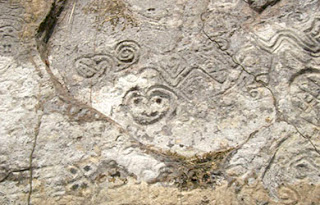On the
banks of the Palatoa river in Manu National Park - Madre de Dios, it’s located
the largest petroglyph of Peru, which was carved between 1000 and 2000 A.D. In
2003 It was recognized as an archaeological heritage by the National Institute
of Culture of Peru.
The first
description of the petroglyphs was made by the Dominican missionary Vicente de Cenitagoya in 1921.
Dr. Carlos Neuenschwander from Arequipa, studied Pusharo site in 1969.
Besides its gigantic size, takes our attention the engraving pictures.
Many studious argued that such drawings would be related to the legendary
kingdom of Paititi.
The
italian researcher Yuri Leveratto indicates that it could be related to the
Quiaca petroglyphs.
Most of
the glyphs represent animal hunting, and even when they have not managed
to successfully figure out the drawings, the closest interpretation
would be the one that holds Reichel-Dolmatoff and Schultes & Hofmann:
Petroglyphs are representations of the Amazonian mythological people performed
by shamans, influenced by the use of hallucinogenic plants.
Not far
from the petroglyphs, the recent discovery of giant figures carved on the
eastern slope of a mountain, also may significantly change our knowledge of the
Incas in this place and the theory of its influence in the Amazonian
people, but it hasn’t been demonstrated yet.
For more information about the Manu National Park: Manu